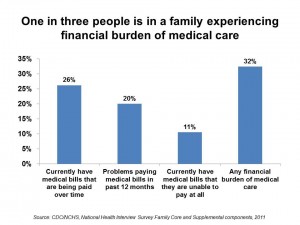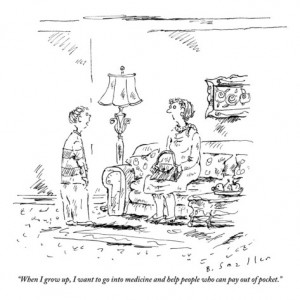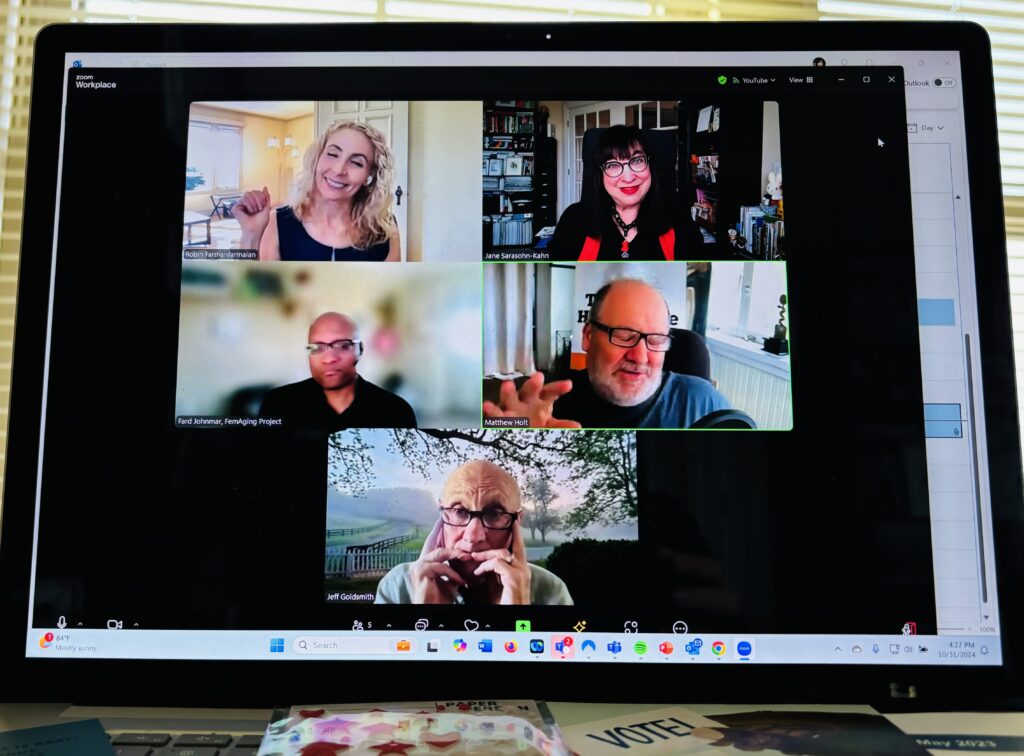 1 in 3 U.S. health citizens had some problem paying for medical care in the first half of 2011, according to a survey from the Centers for Disease Control. In 2010, about 1 in 5 people had trouble paying for medical care.
1 in 3 U.S. health citizens had some problem paying for medical care in the first half of 2011, according to a survey from the Centers for Disease Control. In 2010, about 1 in 5 people had trouble paying for medical care.
26% of people were paying medical bills over time; 20% of people had problems paying medical bills in the past year; and, 11% had medical bills they were unable to pay at all.
Not surprisingly, among people under 65, those who were poor and near-poor were most likely to be in families with medical bill problems.
If you were over 65 and poor, you would have been three times as likely as people were weren’t poor to have problems paying medical bills.
But the financial burden of health care fell hardest on the youngest age cohorts in the U.S.: 39% of people 0-17 years of age and 33% of those 18-64 had higher levels of medical-financial burden than people 65 and over.
For this report, CDC used data from the National Health Interview Survey Family component, conducted between January and June 2011.
 Health Populi’s Hot Points: It’s no mystery why people experiencing medical bill problems tend to be younger: they’re not covered by health insurance the way people over 65 are, through Medicare. However, even the poorest seniors have medical-financial burdens, the CDC survey shows. In fact, insurance coverage overall, whether public or private, improves an American health citizen’s odds of avoiding medical bill problems.
Health Populi’s Hot Points: It’s no mystery why people experiencing medical bill problems tend to be younger: they’re not covered by health insurance the way people over 65 are, through Medicare. However, even the poorest seniors have medical-financial burdens, the CDC survey shows. In fact, insurance coverage overall, whether public or private, improves an American health citizen’s odds of avoiding medical bill problems.
The smallest number in the entire survey is 6%: this represents the percentage of people who don’t have any medical bills they are unable to pay at all, and they’re covered by private insurance.
The highest percentage number in the survey is 53.3%: these are people with financial burden of medical care and they had out-of-pocket medical expenses exceeding $2,000.
The second highest number in the survey table details is 46.7% that is the percent of people with any financial burden of medical care, and they’re uninsured.
These numbers make the argument for basic health benefit plans for all U.S. health citizens. The medical-financial burden falls disproportionately on the poor and chronically sick, and translates into bad debt among providers — especially American hospitals, who bear $29 billion of the $33 billion of the health industry’s bad debt, according to McKinsey.




 I was so grateful and joy-ful to join my long-time brother mischief-maker Matthew Holt and three other old health care leader friends on the Health Care Blog Gang webcast, #Election2024 (and Halloween!) edition. We covered a lot of ground as Matthew always does, with a special brainstorm about the very momentous election just a few days before November 5, 2024.
I was so grateful and joy-ful to join my long-time brother mischief-maker Matthew Holt and three other old health care leader friends on the Health Care Blog Gang webcast, #Election2024 (and Halloween!) edition. We covered a lot of ground as Matthew always does, with a special brainstorm about the very momentous election just a few days before November 5, 2024. Thank you, Trey Rawles of @Optum, for including me on
Thank you, Trey Rawles of @Optum, for including me on  I was invited to be a Judge for the upcoming
I was invited to be a Judge for the upcoming